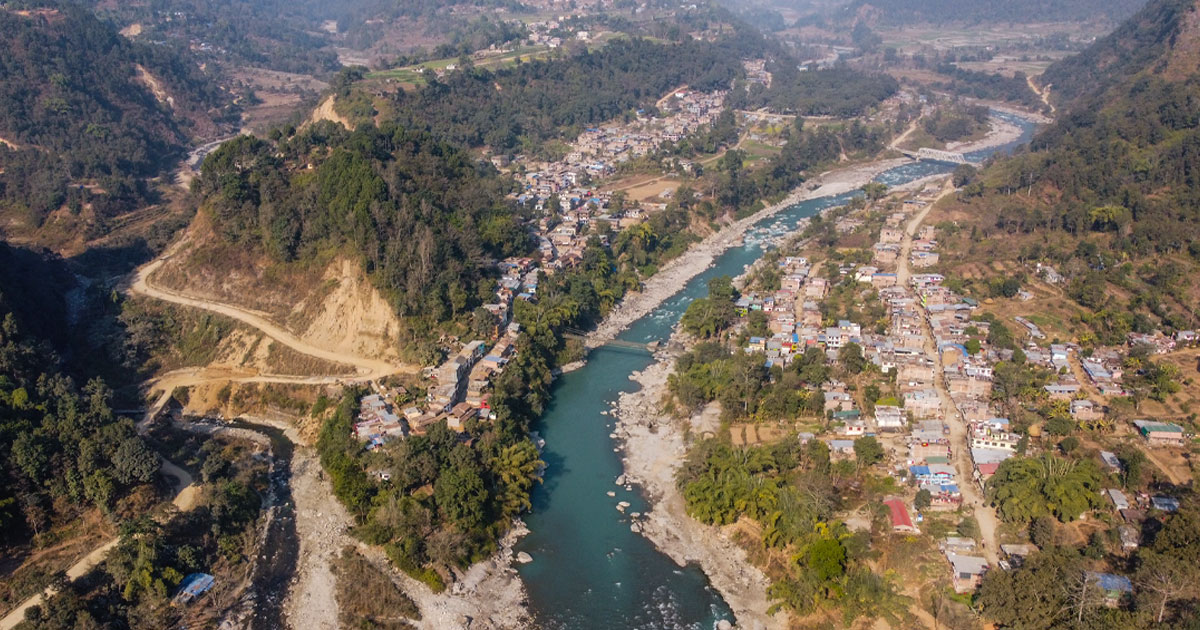

KATHMANDU: The Budhi Gandaki Hydropower Project is a flagship National Pride Project of Nepal. It remains in limbo despite decades of planning and significant financial investment. With a planned capacity of 1,200 MW, the reservoir-type project is strategically located on the border of Gorkha and Dhading districts. While the government had spent over Rs 45 billion by the end of the fiscal year 2022/23, the project has yet to take physical shape, raising questions about delays and implementation challenges. The estimated cost of the project is around Rs 310 billion.
The project is of strategic importance as it provides multi-faceted benefits such as irrigation, drinking water, fisheries, water transportation, flood control, and tourism, along with hydropower generation. The Budhi Gandaki Hydropower Project symbolizes both hope and frustration. With billions already invested, the focus now shifts to overcoming administrative and financial bottlenecks to ensure this national pride project finally becomes a reality. Here are the facts about the project:
1. A Legacy Project Decades in the Making
The Budhigandaki Hydropower Project was first conceptualized during the Gandaki Basin Study in the late 1970s. Since then, it has undergone various studies, with the latest feasibility report recommending a storage-type plant with a capacity of 1,200 MW and a Full Supply Level (FSL) of 540 meters above sea level.
2. Strategic Location and Accessibility
Nestled between the Gorkha and Dhading districts, the dam and powerhouse are conveniently accessible via Benighat on the Prithvi Highway, about 80 kilometers from Kathmandu. A motorable bridge over the Trishuli River leads to the construction site.
3. Nepal’s Energy Gamechanger
This storage project aims to address Nepal’s energy disparity—surplus electricity during summer but reliance on imports in winter. With an installed capacity of 1,200 MW, the Budhigandaki Hydropower Project is expected to boost Nepal’s self-reliance in energy.
4. Key Project Features
Dam: A double-arch structure.
Power Plant: Open-air with 1,200 MW capacity.
Transmission Lines: 400 kV for efficient distribution.
Land Use: Total land required is 56.22 hectares, with 49.62 hectares permanently occupied.
5. A Massive Catchment Area
Spanning 5,000 square kilometers, the project will draw water from:
Gorkha: 2,700 km²
Dhading: 900 km²
Nuwakot: 35 km²
China: 1,365 km²
6. Investment Challenges and Financial Modalities
The Ministry of Energy, Water Resources, and Irrigation has proposed three funding options:
Option 1: 80:20 loan-to-equity ratio (Total cost: Rs. 306.16 billion).
Option 2: 75:25 loan-to-equity ratio (Total cost: Rs. 303.77 billion).
Option 3: 70:30 loan-to-equity ratio (Total cost: Rs. 301.22 billion).
The committee has advised adopting the 80:20 model based on risk assessment and return analysis.
7. Funding Woes: Infrastructure Tax Under Scrutiny
Since 2015, the government has been collecting an infrastructure tax on petroleum products to fund the project. However, despite Rs. 194.5 billion collected, progress remains stagnant, raising questions about transparency and fund allocation.
8. Land Acquisition and Compensation Costs
The government has already spent almsot Rs. 45 billion on land acquisition for the project. Yet, significant portions of the required land remain unattained, adding to the uncertainty surrounding its completion.
9. Time to Reassess: Public-Private Partnership or Privatization?
Given the delays and financial strain, experts suggest exploring public-private partnerships or even privatization to inject momentum into the project.
10. The Road Ahead
For the Budhigandaki Hydropower Project to realize its potential, the government must overcome policy inconsistencies, secure financing, and regain public trust. This megaproject could transform Nepal’s energy landscape—if handled with transparency and efficiency.